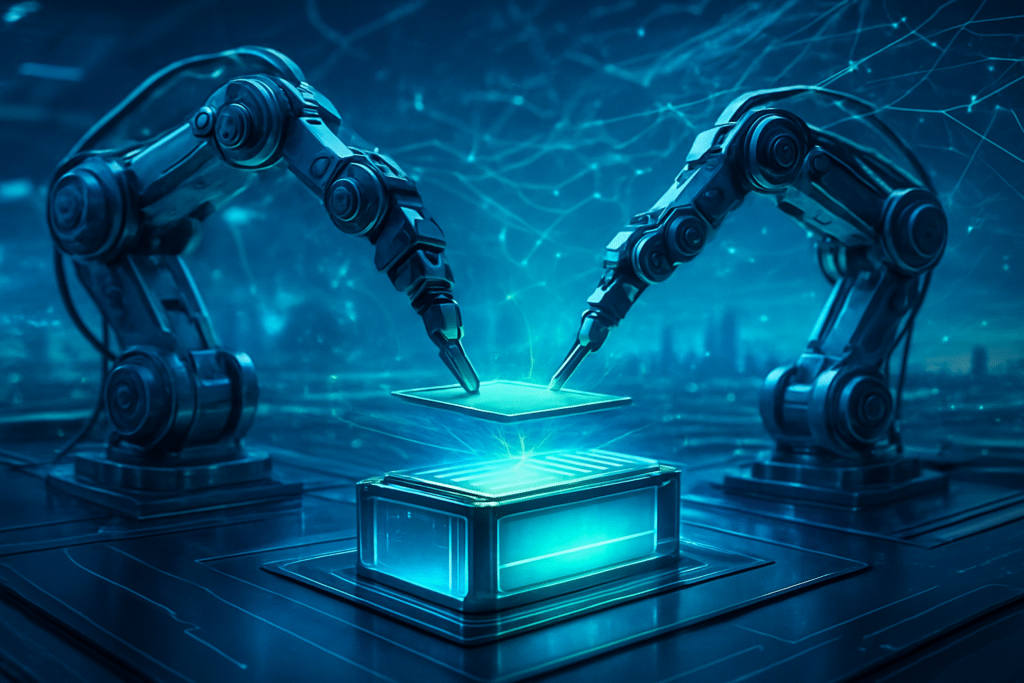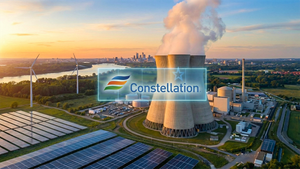
The world of battery technology, a critical linchpin for the electric vehicle (EV) revolution and the burgeoning energy storage sector, is experiencing an unprecedented wave of innovation in electrode manufacturing. As of late 2025, breakthroughs in dry electrode processes, the rapid progression of solid-state batteries, and the emergence of advanced material chemistries are collectively poised to redefine performance, cost-efficiency, and sustainability across the entire energy landscape. These advancements promise to deliver longer-range EVs, more robust grid-scale storage solutions, and a significantly reduced environmental footprint for battery production.
The immediate significance of these developments is profound: they address long-standing challenges in battery production, from the high costs and environmental impact of traditional methods to the safety and energy density limitations of current lithium-ion technologies. By making batteries cheaper, safer, and more powerful, these innovations are not just incremental improvements but fundamental shifts that will accelerate the global transition to electrification, impacting everything from personal transportation to renewable energy integration and consumer electronics.
Unpacking the Technical Revolution in Battery Production
The core of this transformation lies in several distinct yet interconnected technical advancements. Perhaps most impactful is the dry electrode manufacturing process, a paradigm shift from conventional wet slurry methods that rely heavily on toxic and energy-intensive solvents like N-methyl pyrrolidone (NMP). In the dry process, active materials are mixed dry and directly applied to current collectors, drastically cutting down on manufacturing costs, energy consumption, and environmental waste. Companies like LG Energy Solution (KRX: 051910) are at the forefront, with plans for a dry electrode pilot line by Q4 2024 and commercial production by 2028, projecting cost reductions of 17% to 30%. Tesla (NASDAQ: TSLA) has been actively testing dry-coated cathodes for its 4680 cells, and PowerCo (FWB: VOW3), the battery arm of Volkswagen Group, completed factory acceptance testing of a dry-coating system in 2025. Similarly, Panasonic Energy (TYO: 6752) opened a facility in Osaka in 2024 to validate these technologies at production scale, while China's LEAD announced a high-speed dry-coating process promising over 35% energy reduction and more than 20% cost savings. This solvent-free approach not only slashes expenses and accelerates production but also enables thicker electrodes, potentially boosting battery energy density and durability.
Parallel to this, solid-state batteries (SSBs) are rapidly moving from theoretical promise to tangible reality. By replacing flammable liquid electrolytes with solid ones, SSBs offer superior safety, higher energy density, and faster charging capabilities. China's GAC Group (HKEX: 2238) has unveiled a pilot production line for large 60+ Ah solid-state EV battery cells, achieving an impressive areal capacity of 7.7 mAh/cm²—far exceeding conventional limits and potentially doubling EV ranges to over 621 miles, with small-scale vehicle testing expected by 2026. Samsung SDI (KRX: 006400) showcased an oxide SSB with a 600-mile range and 9-minute charging, partnering with Toyota for mass production by 2027. Panasonic plans to mass-produce small SSBs for drones by 2025-2029, featuring an 80% charge in 3 minutes. Even LG Chem is advancing solid electrolyte particle uniformity, increasing basic capacity by 15% and fast-discharge capacity by 50%. These breakthroughs promise to unlock unprecedented performance for EVs and compact energy storage.
Beyond lithium-ion, research into advanced electrode materials and chemistries is diversifying the battery landscape. Lithium-air batteries, with their theoretical energy density rivaling fossil fuels, are seeing progress from Japan's National Institute for Materials Science (NIMS) and Toyo Tanso, developing carbon electrodes for higher output and longer life, crucial for electric aircraft. Lithium-sulfur batteries, offering up to eight times the energy density of Li-ion, are overcoming challenges with robust prototypes. Sodium-ion batteries are experiencing a resurgence, especially in China, with new 20 GWh production plants by companies like Guangde Qingna Technology, offering a 20% cost reduction over Li-ion for urban EVs and stationary storage. NEO Battery Materials (CVE: NBM) is moving to commercial-scale production of silicon-enhanced anodes, which significantly improve energy density and fast-charging. Furthermore, Solidion Technology, in collaboration with Oak Ridge National Laboratory (ORNL), has developed Electrochemical Graphitization in Molten Salts (E-GRIMS) for sustainable, biomass-derived graphite anodes, promising an 83% reduction in carbon footprint.
Competitive Implications and Corporate Beneficiaries
These advancements are creating a fierce competitive landscape, with established players and innovative startups vying for market dominance. Companies like LG Energy Solution (KRX: 051910), Tesla (NASDAQ: TSLA), PowerCo (FWB: VOW3) (Volkswagen Group), and Panasonic (TYO: 6752) are making significant investments in dry electrode manufacturing, recognizing its potential to dramatically reduce production costs and improve environmental sustainability. Those who master this technology first will gain a substantial competitive edge in battery cost and efficiency, potentially disrupting the supply chains of traditional wet-slurry equipment manufacturers.
The race for solid-state battery commercialization is equally intense. GAC Group (HKEX: 2238), Samsung SDI (KRX: 006400), Toyota, and LG Chem are pouring resources into developing and scaling SSBs, aiming to capture the premium EV market and other high-performance applications. Success in solid-state will grant these companies a significant market positioning, offering superior safety and energy density that could redefine vehicle performance and consumer expectations. Meanwhile, companies like NEO Battery Materials (CVE: NBM) with their silicon-enhanced anodes and Solidion Technology with sustainable graphite are carving out niches in material innovation, potentially becoming key suppliers for OEMs looking to boost current Li-ion performance or meet sustainability goals.
The broader implication is a potential disruption to existing battery manufacturing paradigms. Companies heavily invested in traditional wet processes may face pressure to adapt or risk falling behind. Furthermore, the diversification into sodium-ion, lithium-air, and lithium-sulfur chemistries could reduce the industry's reliance on a limited set of critical minerals like lithium and cobalt, fostering more resilient and localized supply chains. Early movers in these alternative chemistries, particularly in China with sodium-ion, stand to gain strategic advantages in cost-sensitive markets and stationary storage. The integration of AI and machine learning into battery R&D and manufacturing also favors tech giants and AI-driven startups that can leverage advanced analytics to accelerate material discovery, optimize production, and enhance quality control, creating new strategic alliances between material science and artificial intelligence.
The Broader Significance in the AI and Energy Landscape
These developments in battery electrode manufacturing fit squarely into the broader AI landscape, where artificial intelligence is increasingly becoming an indispensable tool for accelerating scientific discovery and optimizing complex industrial processes. AI and machine learning models are being used to predict electrochemical performance from microstructural images, design new materials with desired properties, and fine-tune manufacturing parameters in real-time. This symbiotic relationship between AI and materials science is significantly shortening development cycles, reducing costs, and improving the reliability of next-generation batteries.
The impacts of these advancements are far-reaching. For the energy sector, more efficient and cheaper batteries mean faster decarbonization, enhanced grid stability through better renewable energy integration, and greater energy independence for nations. For transportation, longer-range and faster-charging EVs will accelerate adoption, reducing reliance on fossil fuels and mitigating climate change. In consumer electronics, these batteries will enable smaller, lighter, and longer-lasting devices. Potential concerns, however, include the scalability challenges of entirely new manufacturing processes, the cost premium associated with some of the cutting-edge materials, and the establishment of new, reliable supply chains for novel components. Compared to previous AI milestones, this integration represents a shift from AI as a standalone intelligence to an embedded intelligence that empowers fundamental industrial transformations, potentially as significant as the commercialization of lithium-ion batteries itself, but achieved at an accelerated pace thanks to AI-driven research.
Charting Future Developments and Expert Predictions
Looking ahead, the near-term will likely see the widespread adoption of dry electrode manufacturing for mass-market lithium-ion batteries, leading to tangible cost reductions and improved sustainability in EV production. Solid-state batteries are expected to first enter niche markets and premium EVs, gradually scaling up as manufacturing costs decrease and reliability is proven over millions of miles. Concurrently, advancements in lithium-air, lithium-sulfur, and sodium-ion batteries will continue, with the latter seeing significant deployment in compact urban EVs and grid-scale storage where cost is a primary driver. Silicon-enhanced anodes will become a standard upgrade for existing Li-ion cells, offering a bridge to higher energy densities without completely overhauling current production lines.
Potential applications on the horizon include the electrification of heavy-duty trucks, aviation (electric aircraft and eVTOLs), and advanced robotics, all demanding lightweight, high-energy-density power sources. Grid-scale energy storage will see massive deployments of more affordable and durable batteries, enabling smarter grids and greater renewable penetration. Challenges that need to be addressed include achieving consistent quality and high throughput for dry electrode processes at gigafactory scale, overcoming dendrite formation and interface stability issues in solid-state batteries, and establishing robust, ethical supply chains for new materials. Experts predict a continued convergence of AI, advanced materials science, and manufacturing automation, leading to a continuous cycle of innovation where batteries become increasingly tailored for specific applications, pushing the boundaries of what's possible in energy storage.
A New Era of Power: Wrapping Up the Battery Revolution
The latest developments in battery electrode manufacturing mark a pivotal moment in the history of energy technology. The shift towards dry electrode processes, the imminent commercialization of solid-state batteries, and the emergence of diverse, high-performance chemistries are collectively ushering in a new era of power. Key takeaways include significant cost reductions, dramatic improvements in energy density and safety, and a substantial leap forward in environmental sustainability for battery production.
This moment represents a fundamental re-assessment of battery manufacturing, driven by both market demand and the accelerating capabilities of AI in materials discovery and process optimization. Its significance in the broader tech and energy landscape cannot be overstated; it is not merely an evolution but a revolution that will underpin the global transition to a sustainable, electrified future. The long-term impact will be felt across every sector, from transportation to utilities, making clean energy more accessible and reliable. In the coming weeks and months, industry watchers should keenly observe the progress of pilot lines moving to full-scale production, new strategic partnerships forming between material suppliers and battery manufacturers, and further breakthroughs in AI-driven battery design, all of which will dictate the pace and direction of this transformative journey.
This content is intended for informational purposes only and represents analysis of current AI developments.
TokenRing AI delivers enterprise-grade solutions for multi-agent AI workflow orchestration, AI-powered development tools, and seamless remote collaboration platforms.
For more information, visit https://www.tokenring.ai/.






